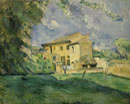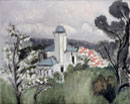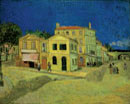
Jocelyne Monello
REALTOR, CRS, GRI, RECS
(707) 224-8281
"Going The Extra Mile Every Client, Every Time!"
Email: JMonello@gmail.com 
Direct: 707-224-8281
Each Office is Independently Owned![]()
![]()
![]()
![]()
![]()
![]()
![]()
![]()
![]()
![]()
![]()
![]()
Heritage Sotheby's International Realty
780 Trancas Street
Napa, CA 94558
Fax: 707-251-8362
and Operated



About the Napa Valley
- Where is the Napa Valley?
- How can I get there?
- The Napa River
- History
- Mount St. Helena
- The Wines of the Napa Valley
- The Towns of the Napa Valley
- Scenic Routes
It's in Northern California at the northeastern tip of San Francisco Bay (actually called San Pablo Bay up that far), about an hour's drive north of San Francisco. To the west is the Sonoma Valley, to the east is Lake Berryessa and Yolo and Solano Counties, and to the north Lake County. Napa Valley is actually just one of many valleys in Napa County, but it's by far the largest and best known. The valley itself is about 30 miles long and ranges from one to five miles wide.
Napa County has a population of about 110,000 people, and five incorporated cities. North to south, they are: Calistoga, St. Helena, Yountville, Napa and, at the southern end, American Canyon. Angwin, Deer Park, Lake Berryessa, Rutherford and Oakville are communities with post offices but aren't actual towns.
The county's primary industries are winegrape growing, wine production and tourism. Thanks to stringent and ongoing efforts by the vast majority of the voters, there is little development in the county itself; most commercial and residential development is in the cities. This preserves a huge amount of agricultural land, allowing Napa County to avoid the urban sprawl that has affected almost all other San Francisco Bay Area counties. The result is an attractive place for residents to live and tourists to visit.
From San Francisco
Drive north over the Golden Gate Bridge on Highway 101 almost to Novato, take the Napa (Highway 37) exit to Highway 121/12 and continue following the signs to Napa. The trip takes just under an hour in good traffic, considerably more at rush hour. But as a visitor you shouldn't be driving at rush hour anyhow. Enjoy the views, the cows, the vineyards, the oak trees. It's by far the most scenic way to drive to the Napa Valley.
Shortly before you reach the Napa Valley, you'll pass (on the right side of Highway 121--the Carneros Highway) Domaine Carneros by Taittinger winery. The chateau is inspired by the Chateau de la Marquetterie, the historic 18th century Champagne residence owned by the principal founder of Domaine Carneros, Champagne Tattinger of Reims, France.
A short time later you'll find yourself at Highway 29, the main highway running north-south in the valley. Turn left (north) toward Napa and Calistoga.
From Oakland and Sacramento
Take Interstate 80 north from Oakland or west from Sacramento. If you're staying right downtown in San Francisco, it's usually quicker this way - over the Bay Bridge - than going through town and over the Golden Gate Bridge. Going up the East Bay isn't pretty but it's fast.
Turn off Highway 80 at the Napa exit and head west toward the Napa Valley. At some point you'll pass the intersection of Highway 29 and Highway 12. At the southeast corner of this intersection, across from the Napa County Airport, is a large two and three story stone building nestled among oak trees that looks like it just has to be a winery. It isn't. It's an insurance company. Sorry - no visitors, no wine, and no picnicking.
On the west side of Highway 29 is the Napa County Airport. The largest facility there belongs to Japan Air Lines. They provide basic flight training for almost all their pilots here. More than 150 student pilots are undergoing training at any given time.
Continuing north, you'll come to a fork. You can either go right onto Soscol Avenue (forking off to the right just before the traffic light) and on into the town of Napa, or go left over the Southern Crossing (George F. Butler Bridge) and continue north on Highway 29 toward Calistoga. (From 29 there are a number of exits into Napa). It's your choice, although we suggest continuing north on 29. It's a much prettier drive. If you do, as you cross the bridge you'll look down on the meandering Napa River.
The Napa River is one of four navigable rivers in California. It's a major source of freshwater to San Francisco Bay, and offers excellent fishing for striped bass and sturgeon. There's even peaceful canoeing right in the heart of Napa. It's also the home river for the "City of Napa", Napa's sternwheeler riverboat.
Currently a local organization, "Friends of the Napa River" has formed to preserve the river, which has a tendency to frequently flood parts of Napa. Of course building a city on a flood plain wasn't a great idea to begin with, but now that it's here, citizens are creating ways to save both the river and the city by turning out a river that's developed, flood-safe, and still natural and free-flowing.
The original inhabitants of the valley were the Wappo. The name Wappo was given by the Spanish and probably derived from the Spanish word "guapo", meaning "handsome." The natives were here at least 4,000 years before the Spaniards arrived. In 1831 there were an estimated 10,000 to 12,000 living in the valley. Most later lost their lives to cholera and smallpox, as well as to attacks by white men. There are still surviving Wappos in Napa, Sonoma and Lake counties.
The first American settler in the Napa Valley was George Yount. He arrived in 1831, became friends with General Mariano Vallejo, and was given an 11,000 acre Mexican land grant. He built the first wooden structure in the county, a two-story Kentucky block house. He also planted the first grapevines in the Napa Valley. The vines were from Mexico; it was not until 1860 that the higher quality European winegrapes were introduced.
The wealth of post-Gold Rush San Francisco created a huge demand for wine, and by 1891 there were 619 vineyards throughout the valley. The wineries survived economic depression and the disease of phylloxera but were no match for Prohibition, the United States' "Great Experiment" of declaring alcoholic beverages not just immoral but illegal. Prohibition closed almost every Napa Valley winery. The few that survived provided medicinal wine or sacramental wine for churches. Vineyards were ripped out, to be replaced by prune and walnut orchards.
Prohibition ended in 1933, but it was not until 1966 that a new winery was finally built in the Napa Valley. It was Robert Mondavi Winery in Oakville. Since that time several hundred wineries have been built, as the Napa Valley was rediscovered as a premium wine region, recapturing its earlier pre-Prohibition fame. Today there are more than 200 wineries throughout the county.
Today the Napa Valley is one of the most popular tourist attractions in California, and world renowned for its wines. The fame of its wineries is matched by the reputation of its restaurants. Combined with the beauty of the area, they provide a vacation holiday without equal anywhere in the country.
Although many locals like to say that the Napa Valley gets as many visitors as Disneyland, the reality is that Disneyland has about 14 million visitors a year and the Napa Valley a little over five million. Five million is enough--particularly because most of them come either during the summer or during "crush", the harvest in September and October. Come visit us during late fall, over the winter, or in the spring and you'll find far fewer people and have much more time to chat with winery staff. The valley is beautiful all year long, just different from season to season. The wine is always delicious.
That extinct volcano you see at the north end of the valley - Mount St. Helena - is not extinct. But not to worry, it isn't a volcano either. Despite the beliefs of many locals, it's just a mountain. It is, however, one of the four sacred mountains of the San Francisco Bay Area. Mount St. Helena at the north; Mount Hamilton at the south - near San Jose; Mount Diablo at the east - near Concord; and Mount Tamalpais at the west in Marin County.
Even if Mount St. Helena was never a volcano, there is a great deal of geyser activity just below it in the hot springs town of Calistoga, and to the northwest in an area known as The Geysers, used as a source of thermal energy.
The Napa Valley's climate and soil have made it one of the world's great wine growing regions. It has long been famous for its ability to grow Bordeaux grapes such as Cabernet Sauvignon and Sauvignon Blanc. Later it was discovered that the southern part of the valley, particularly the Carneros region next to the San Francisco Bay, was ideal for growing the grapes of Burgundy, including Chardonnay and Pinot Noir.
Other popular wines include Merlot, Zinfandel, Riesling, Petite Sirah, Gamay Beaujolais and Chenin Blanc, and some wineries are producing Semillon, Gamay, Cabernet Franc and Muscat. Recently there has been a return to the old Italian grapes that were once grown in the valley and wineries are beginning to produce such wines as Pinot Grigio, Sangiovese and Dolcetto.
There are also a small number of wineries that produce sparkling wine. Technically a sparkling wine has to be produced in the Champagne district of France to be called "Champagne", but because the United States never signed the international accord agreeing to that, some Napa Valley wineries call their product "champagne". Others honor the agreement and refer to their products as "sparkling wine."
American Canyon is Napa County's newest and second largest city, incorporated just a few years ago. For visitors driving from up Highway 80 from the East Bay, it's the "gateway" to the Napa Valley.
Napa
The city of Napa is the county seat, founded in 1848 by Nathan Coombs. During Gold Rush days, cattle and lumber were mainstays of the local economy. Today the economy is based on wine and tourism; over 60,000 people live here.
Yountville
In 1831 George Yount, the first American settler in the Napa Valley, came to the area now called Yountville. He received an 11,000 acre Mexican land grant and built the first structures in the area: a Kentucky blockhouse and mill. Even more importantly, he planted the first grapevines in the Napa Valley.
In 1855 Yount hired a surveyor to lay out a town site and named it "Sebastopol", ignoring the fact that a town in Sonoma County already had that name. In 1865, two years after his death, the town was renamed in his honor. His grave can be found in Pioneer Cemetery, next to Yountville Park at the north end of town.
When Yountville incorporated, it wanted to be called a "Village". The State of California didn't allow for villages so Yountville had to refer to itself as a town. It still feels like a village, with a population of just over 3,000, half of those at the Veterans Home of California.
Yountville is a "walking town", filled with excellent shops, restaurants and lodging. Spend some time here. You'll enjoy it.
Oakville
An unincorporated area with a great little post office. Famous for its The Oakville Grocery and surrounding wineries, particularly Robert Mondavi Winery.
Rutherford
Another unincorporated town best known for its two major wineries on Highway 29 - Beaulieu Vineyard and Niebaum-Coppola (formerly Inglenook).
St. Helena
Founded in 1853 and the high-profile center of the Napa Valley wine industry, St. Helena is still a small town with less than 6,000 people. The main street of St. Helena is, coincidentally, called Main Street. (It's also Highway 29 and the St. Helena Highway.) Main Street is loaded with enough boutiques to sink a boatload of yuppies. Enjoy yourself. It's smalltown America with a designer's touch.
Calistoga
Calistoga was developed in the 1860's. Its name is reputed to have been accidentally coined by town founder Sam Brannan. Brannan apparently intended to refer to it as the "Saratoga of California", the "Saratoga" referring to the well known spa area in New York State. Brannan, having had a few drinks, instead came out with "the Calistoga of Sarafornia". Calistoga it stayed.
Calistoga is the place for spas, and it's the only town in the Napa Valley with any real nightlife--despite the fact that it has only one-tenth the population of the city of Napa. People walk along the sidewalks; wander in and out of bars, restaurants and shops; smile at each other; and, in general, have a great time. After all, after lying in mud, soaking in bubbling mineral water and getting massaged throughout the day, you'd be pretty mellow, too.
Angwin
Angwin is a small community and the home of Pacific Union College. With a student body of 1,500 and a student-teacher ratio of 13:1, this Seventh Day Adventist college is rated one of the top liberal arts colleges in the West. Example: it's one of the top 10 schools in the nation whose graduates are accepted into medical school. PUC's 200-acre campus is located at the top of Howell Mountain, overlooking the Napa Valley. The campus is surrounded by 1,800 acres of agricultural and forested land--great hiking area. Right next to the college is a small shopping center with a huge vegetarian grocery store.
Lake Berryessa
Prior to 1957, Lake Berryessa was Monticello Valley and the town of Monticello. When Monticello Dam was completed, the lake started filling. Today it is one of the largest man-made lakes in California, 25 miles long, 3 miles wide and 275 feet deep at its deepest point, with 168 miles of shoreline.
A wide variety of fish can be found in the lake, including bass, rainbow trout, brown trout, bluegill, crappe and catfish. Campgrounds and picnic areas are abundant.
Every road in the Napa Valley is scenic. Some are just more scenic than others. Highway 29, the main road up the (westish) center of the valley, takes you through all the valley towns and right by some of the area's most famous wineries and restaurants. And from Napa to St. Helena it parallels the route of the Napa Valley Wine Train. Wave at the engineer and passengers. That's half the fun for everybody.
Passing through St. Helena, Highway 29 is called Main Street. Along most other stretches it's referred to as the Saint Helena Highway. In reality it's all Highway 29 - a divided highway from Napa to Yountville, and a two-lane highway (with frequent left-turn lanes) all the way from Yountville to Calistoga. Caltrans, the State of California's transportation department, would love to make 29 a divided highway the whole length of the valley, but the natives have fought valiantly and successfully to prevent this from happening. Even most of those who commute up or down the valley are willing to put up with the inconvenience of a two-lane road in order to preserve the beauty of the drive.
To get a full appreciation of the Napa Valley, you should definitely drive Highway 29, in one direction or the other.
The Silverado Trail
The Silverado Trail runs along the east side of the valley. It goes outside most of the towns, and there are fewer wineries and much less traffic. Yet it still offers beautiful views, many wineries and quicker driving if you're in a hurry. Don't be in too much of a hurry, however. The view is too lovely and this road can be dangerous, because people drive much faster than on Highway 29 and seem to get more impatient, passing on stretches where it is unsafe to pass. Use caution and you'll enjoy "the Trail" immensely. We do.
The name "Silverado" comes from its history carrying quicksilver (mercury) wagons from the mines in northern Napa County. The quicksilver was eventually transported to the gold fields of California where it was used to separate gold from the ore or sand in which it was found. The Trail also led to the Silverado silver mine on Mt. St. Helena where years later Robert Louis Stevenson gathered the notes for his story The Silverado Squatters.
The Cross Roads
Crossing the valley from east to west, and connecting Highway 29 with the Silverado Trail, are three major crossroads. Each road crosses the valley at the town after which it's named. They are: Yountville Cross Road, Oakville Cross Road, and Rutherford Cross Road. (Several other roads make this connection as well but they don't quite have the flair that the crossroads do). Each road passes wineries and beautiful homes, and all offer gorgeous views. Try any one of these to get off the beaten path.
Cuttings Wharf Road
Don't be too disappointed if after turning off Highway 121/12 south of Napa, you follow the "Napa River Resorts" signs to Cuttings Wharf and have trouble finding the "resorts". Perhaps there once were resorts in this area, although there appears to be no historical record that this was ever the case. Still, it's a pleasant drive, taking you through some of Napa County's section of the Carneros wine district, famous for its Chardonnays and Pinot Noirs.
Washington Street
Between Yountville and Napa is an eight mile stretch of divided highway. The highway offers beautiful views, but for more leisurely sightseeing we offer two tips. Northbound from Napa, turn right (east) at the Washington Street turnoff, then turn immediately left to go north again. Follow the frontage road to Yountville, enjoy the view of the vineyards by the side of the road, and take pictures of the beautiful views toward the mountains to the east.Where is the Napa Valley?
How Can I Get There?
You can reach the Napa Valley by air, land or water. However, because there is no scheduled service to the Napa County Airport (visitors arrive by private plane or charter), few come by water (the ferry takes you only as far as Vallejo, although small boats can go up the Napa River as far as the city of Napa), and over 90% of our visitors come by car or tour bus, we'll focus on arriving by land.The Napa River
History
The Napa Valley Today
Mount St. Helena
The Wines of the Napa Valley
The Towns of the Napa Valley (from South to North)
American Canyon
Scenic Routes
Highway 29

Copyright © 1996-1998 Westsong, Inc.